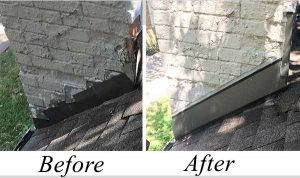While it may seem counterintuitive, venting your Dallas roof can keep your home cooler and more pleasant. A reputable Dallas roofing company can develop a ventilation plan that keeps your roof cooler and your home more energy efficient.
Why Should Roofs Be Vented?
Ventilation improves airflow, regardless of the area. By venting the roof properly, hot air can escape your house, and new air can enter, which often removes the stuffy feeling. By having a Dallas roofer ensure your home’s airflow is appropriate, you can also keep your roof cooler and extend the life of your shingles in the Dallas sun.
Principles of Good Ventilation
Ventilation is relatively straightforward, and there are clear building codes In Dallas. However, that does not mean the ventilation is functioning correctly. A Dallas roofing company can check your ventilation and airflow to ensure your attic and roof are doing what you need.
Practically, about half of your home’s ventilation space should be low and half should be high to promote airflow. Low ventilation, like soffit vents, allows air to enter the attic space. High ventilation, like hood or box vents, gives the air someplace to escape, which helps keep the air moving.
Tools Dallas Roofers Use for Ventilation
Ridge Vents
Ridge vents are placed on the ridges in the roofline, which are the highest points in the home. These vents are typically not wide, but they can span the entire roof ridgeline if a Dallas roofing professional deems it prudent.
Ridge vents use a tiered approach. The vents are underneath a slightly raised and oversized piece, so water and debris do not enter the attic area. In addition, these vents typically have some form of grate to limit debris.
Turbine Vents
Turbine vents use the wind to pull air out of the attic space. These vents are flexible, and a Dallas roofing company can place them almost anywhere on your roof to maximize the ventilation airflow.
Turbine vents are an electricity-free option that works best when the wind blows. The spinning motion the wind creates in the turbine actually pulls warm air out of the attic space to maximize the cooling effect.
Hood Vents
Hood vents are another option to improve the exhaust capacity in an attic. These vents are placed just below the roof’s ridgeline, and the low profile against the roof tends to be attractive as you’re working with a Dallas roofing professional.
These vents offer solid exhaust areas. The roof hood vents help direct warm air upward while keeping the attic area free of water and debris. The trick to maximizing this is having a Dallas roofing company choose the most beneficial locations.
Gable Vents
Gable ventilation tends to help with horizontal airflow rather than vertical. These vents tend to be placed on one end or the other of your attic space. Some people enjoy them because they add architectural interest.
Due to the limited capacity this type of vent adds, it’s not as commonly deployed as others in the article. Still, you may have a professional Dallas roofer recommend one if it is right for the shape and position of your home.
Electrical Ventilation
Typically, professionals for not deploy electrical ventilation for attic spaces. Instead, you most commonly see electrical ventilation used for bathroom areas where removing the moist air is critical.
Do you need to ensure the ventilation plan for your Dallas roof is working? Contact the local Dallas roofing experts at StazOn Roofing today.




